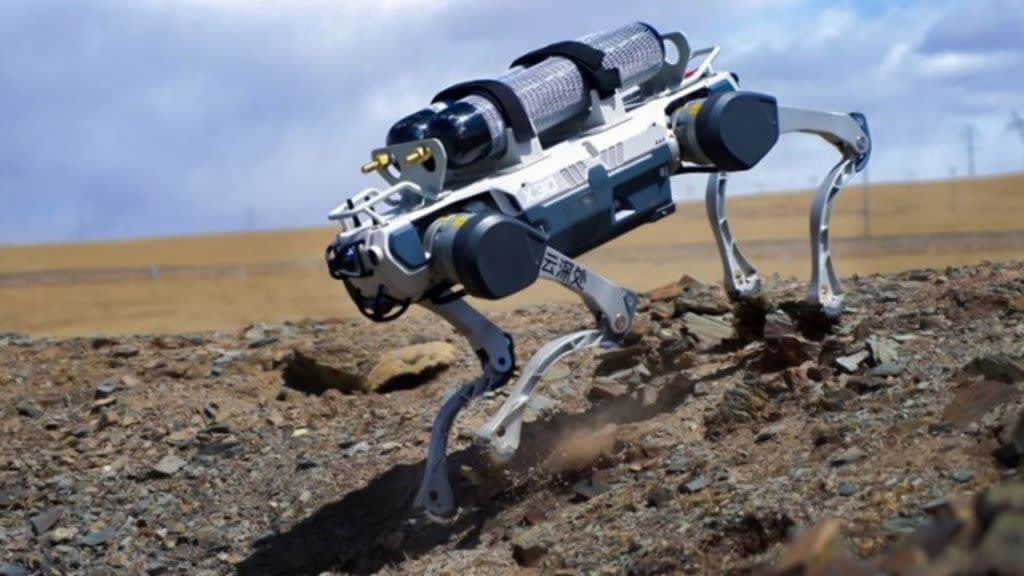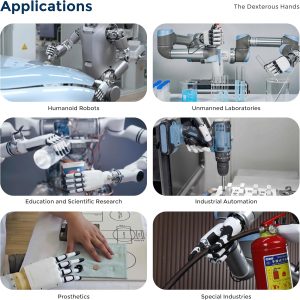Robotic Evolution: The Shape-Shifters of Tomorrow

Imagine a world where robots don’t just move but adapt. This is not science fiction anymore. Scientists have designed a robot that can transform its shape on demand. With this innovation, the boundaries of what robots can achieve are expanding dramatically.
This shape-changing marvel is set to alter how we perceive robotics. Unlike traditional robots, these can be both strong and flexible. It’s a feat inspired by nature, where organisms naturally adapt their forms. By mimicking these biological processes, the potential for these robots in rescue missions and medical applications becomes limitless.
Breaking New Grounds with Robotics
The robotics world has just witnessed something extraordinary. A new kind of robot, one that can shift its shape, has made its debut. This revolutionary design allows robots to be rigid and strong or flexible and weak, depending on the situation. By moving from solid to fluid states, these robots open new doors for tasks previously thought impossible.
These shape-shifting robots are designed to navigate unpredictable environments. With the potential to squeeze through tight spaces and solidify when necessary, they can be saviors in rescue operations. This flexibility and strength in one entity challenge traditional views on what robots can and cannot do.
The Science Behind the Shape-Shifters
The inspiration came from biology. Just like embryos that shift structures in development, these robots can change state based on signals. Scientists created a swarm of robots, resembling pucks, that use gears and magnets for movement.
Lights guide these robots. They rely on light sensors with polarized filters to interpret commands. Instead of direct commands, it’s a light show, guiding them to flow or solidify as needed. This method empowers them to become a unified material, adaptable and strong.
Technological Implications and Future Applications
Imagine a swarm of robots flowing like water through debris, then hardening to form a bridge. It’s possible with this technology. It could change disaster response strategies, where robots could save lives by reaching areas humans cannot.
These adaptive materials are also being eyed for medical applications. Robots that adjust during surgery, prosthetics that change to user needs, and even implants that heal could all become realities. Such advances could massively improve the healthcare industry. However, this technology also poses challenges, especially concerning ethical considerations in medical and rescue operations.
The idea of self-assembling robots might seem futuristic, yet it’s feasible. Building and fixing structures in space could be transformed. With these robots, even the harsh environments of the Moon or Mars could be tackled, leading to new frontiers in space exploration.
Robots in Everyday Life
These innovations aren’t just limited to science labs or space missions. Soon, homes could host intelligent robots. Companies are fast-tracking developments for household robots, betting on the future of home automation.
One promising example is Figure AI’s Helix model, which can understand language and visual inputs, learning tasks quicker. This could revolutionize home life by assisting with daily tasks, thus changing how we interact with technology in our living spaces.
Meanwhile, the introduction of AI-powered AR glasses offers another angle. These devices, though compact, are smart and efficient, paving the way for augmented realities. They not only track vital signs but also enhance communication with the digital world in fascinating new ways.
Revolutionizing Industrial Sectors
Industries stand to gain significantly from robotic advancements. Manufacturing, for instance, is already experiencing changes, with robots taking over complex assembly tasks.
Apptronik, in partnership with Jabil, is testing Apollo, their humanoid robot, in factories. The hope is that these robots will soon create more robots, automating production lines efficiently. This could mark a big shift in manufacturing, reducing costs and improving efficiency.
Sanctuary AI has taken humanoid robots to another level. By equipping them with tactile sensors, they’re achieving human-like dexterity. This allows them to perform intricate tasks, even in the absence of light. The potential applications in logistics and retail are vast, filling labor gaps and optimizing operations.
Navigating Ethical and Practical Challenges
While the benefits are clear, these advancements bring ethical debates. Balancing automation and employment is one challenge. Another is ensuring that such technologies don’t widen the gap between those with access to these innovations and those without.
Practical hurdles also exist. Creating robots that can adapt like living organisms is a complex task. It requires continual development and innovation to solve the real-world problems these robots face.
Nevertheless, the path is set. With research advancing rapidly, these shape-shifting robots are just the beginning. They promise a new era where machines and humans collaborate more efficiently, tackling challenges together, expanding what’s possible in our world.
The Future of Robotics and Human Interaction
As robots evolve, so will our interactions with them. From smart homes to augmented reality experiences, we’re on the brink of a new era in human-machine interaction.
With robots assisting in everyday tasks and complex operations, they might soon become parts of our families. This era requires careful navigation to ensure that technology enhances rather than dominates human life.
Therefore, focusing on creating technology that aligns with human values is crucial. By doing so, the future not only looks promising but also harmonious, where both robots and humans thrive together.
Robotics is no longer just about machines; it’s about creating adaptable allies. As these shape-shifting robots evolve, they hold the promise of changing our world.
With careful development and ethical guidelines, this technology will continue to inspire and motivate. Embracing these advancements responsibly will be key to shaping a future full of possibilities.






